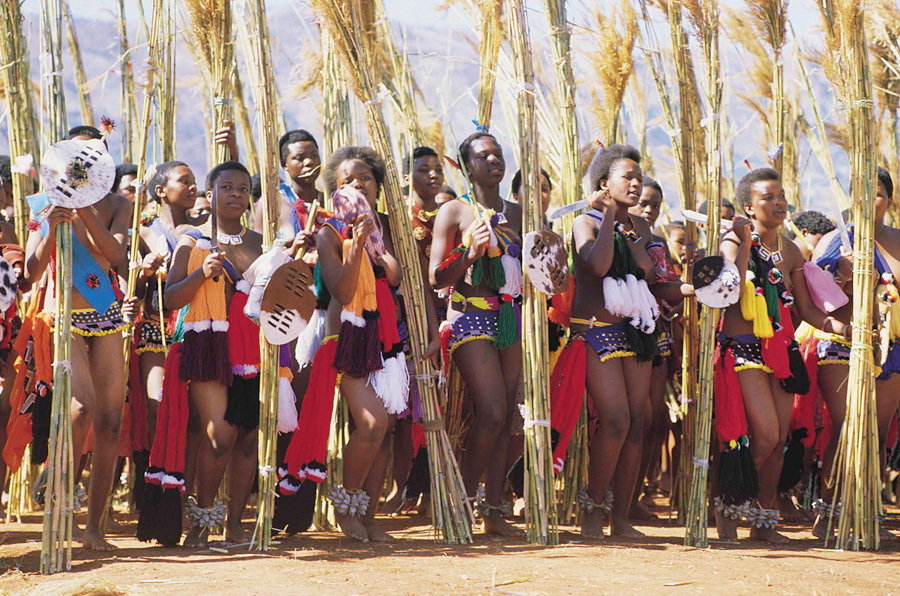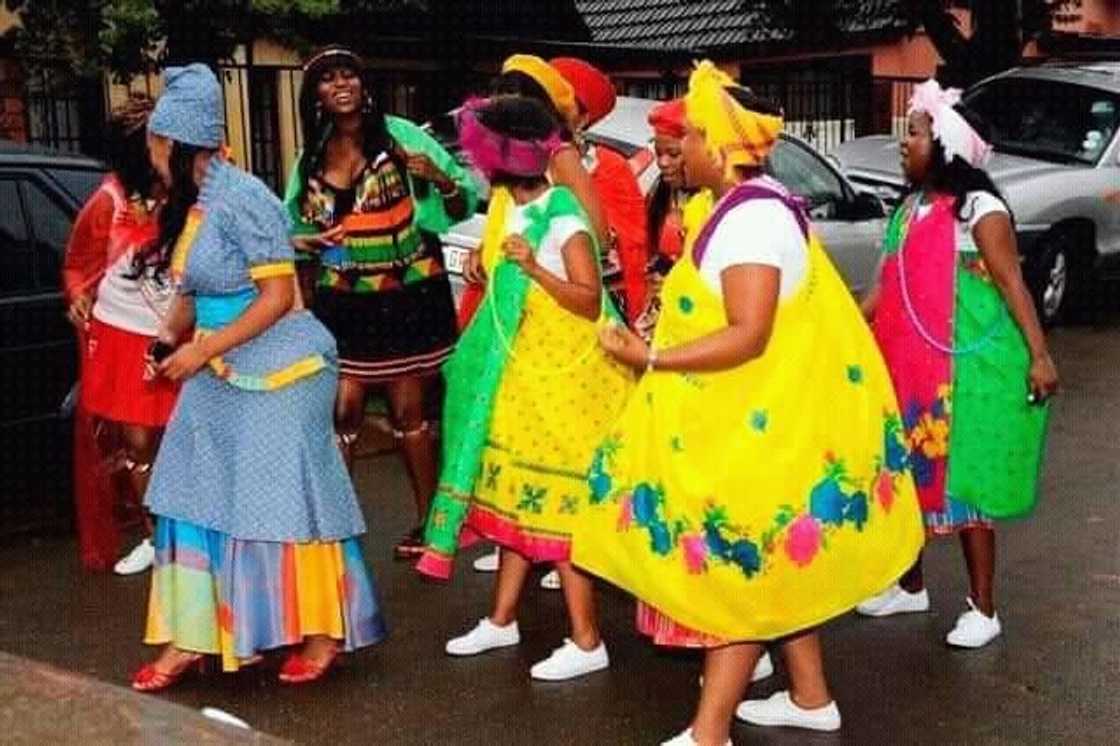8 Easy Facts About South African Culture Today Explained
8 Easy Facts About South African Culture Today Explained
Blog Article
All About South African Culture Today
Table of Contents7 Easy Facts About South African Culture Today ShownNot known Details About South African Culture Today See This Report about South African Culture TodayNot known Factual Statements About South African Culture Today All About South African Culture TodaySouth African Culture Today - Questions
This follows with singing and drum pounding. The new bride and groom after that consult with the elders and discuss the significance of their union. A matter of value in Zambian towns is the passing away of enjoyed ones. All participants of the village placed cash, time and initiative together for the interment of the deceased.During the mourning period; men stay outside your house and the females remain inside your home of the deceased. After speaking about the departed, the village strolls to the location of interment to claim their last bye-byes. Songs and dancing is a really essential aspect of the Zambian culture. The numerous tribal devices have their very own dancing kinds; nonetheless, makishi prevails among all people.
The smart Trick of South African Culture Today That Nobody is Talking About
When it comes to music, drums are used the most, with a range of drumming ceremonies. In Zambia, majority of the individuals are Christian; Protestant and Roman Catholic. There are little teams of Muslims and Hindus, with the remainder adhering to local indigenous tribal ideas.

South African heritage and society is exceptionally varied, and contains numerous various teams of people that each have their very own traditions and ideas. Having such a diversity of individuals and cultures is what makes South Africa so unique. In real feeling of the expression, we are a rainbow country.
South Africa has approximately 3 hundred thousand Portuguese individuals staying in it. Making it the 7th on the checklist of nations with one of the most Portuguese individuals in it outside of Portugal. Portuguese is not just a society, yet it is additionally a language and a race. Portuguese individuals originate from the country of Portugal in Europe, nonetheless, as a result of Portugal (like several various other countries in Europe) exploring the world and overcoming various other countries during the 15th 20th centuries, South Africa has what we call Portuguese South African's living in it.
How South African Culture Today can Save You Time, Stress, and Money.
Among the noticeable functions of the topography is a plateau that covers nearly two thirds of the facility of the country. The plateau complicated climbs toward the southeast, where it culminates in the Drakensberg variety, component of an escarpment that separates the plateau from the seaside locations. The Drakensburg includes Sparkling wine Castle, the highest height in the country.
The region north of the Witwatersrand, called the bushveld, slopes downward from eastern to west towards the Limpopo River, which develops the global boundary. The western section of the plateau, the middleveld, likewise comes down towards the west and varies in altitude in between the highveld and bushveld. Between the Drakensburg and the eastern and southern shoreline, the land comes down to the sea.
Nearer the shore there is a low-lying plain called the eastern lowveld. Southwest of the plateau the country becomes gradually a lot more dry, offering means to the stony desert of the Great Karroo, surrounded on the eastern by the lower, better watered plateau of the Little Karroo. Separating the dry southerly inside from the sandy coastal of the southern shore and West Cape is another range, the Langeberg.
Some Known Details About South African Culture Today
The nation's racially, ethnically, and politically separated background has actually created national and subnational signs that still function as symbols of the country, and others icons that are approved just by particular groups. The monuments to white inhabitant conquest and political prominence, such as the Afrikaner Voortrekker ("leader") Monolith in Pretoria and the Rhodes Monument honoring the British colonial empire home builder and Cape prime preacher Cecil Rhodes, continue to be sectarian signs.
The very first modern inhabitants were the San ("bushman") hunter-gatherers and the Khoi ("Hottentot") individuals, that herded livestock (South African culture today). The San might have existed for countless years and left evidence of their visibility in countless ancient cavern paints ("rock art"). Bantu-speaking clans that were the ancestors of the Nguni (today's amaZulu, amaXhosa, amaSwazi, and vaTsonga individuals) and Tswana-Sotho language groups (today's Batswana and Southern and Northern Basotho) migrated below east Africa as very early as the fifteenth century

Both former republics of the Orange Free State and Transvaal (South African Republic) were developed by Afrikaner settlers who beat and dispossessed the Basotho and Batswana. Lesotho would certainly have been forcibly integrated right into the Orange Free State without the extension of British security in 1869. The best unification of the country arised from the South African Battle (18991902) in between the British and the two Afrikaner republics, which minimized pop over to these guys the nation to mess up at the start of the twentieth century.
Afrikaners traditionally considered themselves the only true South Africans and, while approving complete citizenship to all residents of European descent, denied that condition to individuals of shade up until the democratic change of 1994. British South Africans retain a feeling of social and social connection to Great Britain without weakening their identity as South Africans.
The Buzz on South African Culture Today
The diversity and fragmentation within ethnic groupings and the balance of stress in between those teams during the twentieth century stopped interethnic try here civil problem. While intergroup tensions over resources, entitlements, and political prominence stay, those disputes are as likely to match Zulu versus Zulu as Zulu against Xhosa or African against Afrikaner.
From colonial India, British merchants and managers brought the rounded metal ornamental roofs and slim lace work pillars that still represent the outdoor patios of cottages in the areas and cities throughout the nation. Homes of worship add an important architectural aspect also in the tiniest towns. Along with the skyrocketing steeples and traditional stonework of Afrikaans Dutch Reformed churches, Anglican churches, synagogues, mosques, and Hindu shrines give range to the religious building scene.

Butchering and the brewing of typical cereal beer are necessary in securing the involvement and a good reputation of the forefathers who are thought about the guardians of good luck, prosperity, and well-being. Indian neighborhoods keep their indigenous culinary traditions and apply them on Islamic and Hindu routine and ritualistic celebrations. Afrikaners and Coloured people gather at weekends and special events at multifamily bbqs called braais, where area bonds are strengthened.
Because this was the main economic venture of both black Africans and white colonists, conflict between those groups centered on the ownership of grazing land and animals. In 1867, the biggest ruby down payments worldwide were uncovered at Kimberley in the west main you can find out more location. The wide range from those areas assisted fund the exploitation of the biggest gold reef worldwide, which was uncovered on the Witwatersrand in 1886.
Facts About South African Culture Today Revealed
This caused misunderstandings and intentional misrepresentation in the dealings of white inhabitants and federal government officials with African principals throughout the colonial duration (South African culture today). In the facility of African gets, some elements of communal and primarily "tribal count on" land period were maintained, and even in white backwoods, forms of public tenure were still practiced in locations with African neighborhoods
After the democratic transformation of 1994, programs for land restitution, redistribution, and reform were instituted, however development has actually been slow. The white minority still manages eighty percent of the land. In the wake of farming land intrusions in Zimbabwe, the Department of Land Matters has vowed to speed land redistribution.
Report this page